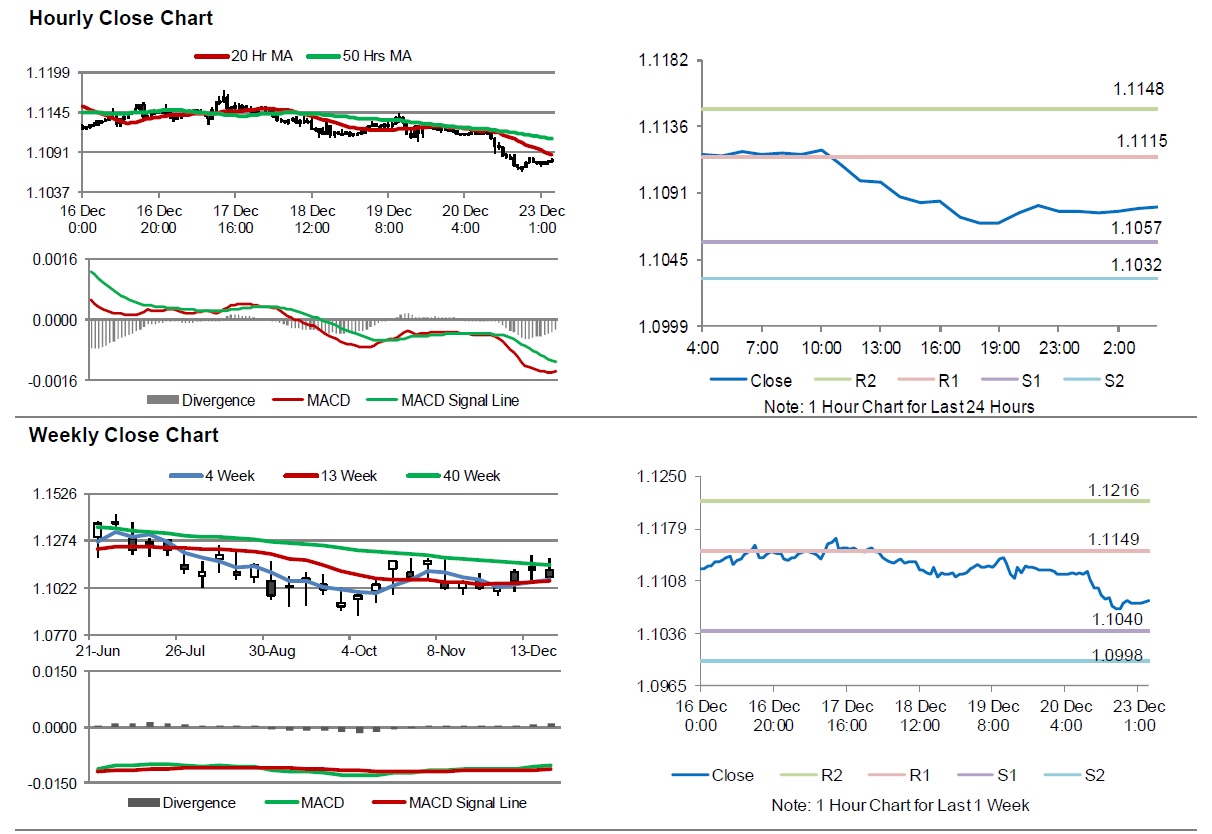For the 24 hours to 23:00 GMT, the EUR declined 0.40% against the USD and closed at 1.1077 on Friday.
Data indicated that Euro-zone’s seasonally adjusted current account surplus unexpectedly widened to €32.4 billion in October, driven by trade surplus, primary income and defying market expectations to narrow to a level of €25.5 billion. In the prior month, current account surplus stood at €28.2 billion in the prior month. On the contrary, the consumer confidence index unexpectedly slid to a level of -8.1 in December, compared to a level of -7.2 in the previous month.
Separately, in Germany, the GfK consumer confidence index unexpectedly eased to 9.6 in January, following a reading of 9.7 in December.
In the US, data revealed that annualised gross domestic product rose 2.1% in 3Q 2019, in line with market expectations and compared to a 2.0% rise in the previous quarter. Additionally, personal income climbed by 0.5% on a monthly basis in November, surpassing market forecast for an increase of 0.3% and compared to a revised rise of 0.1% in the previous month. Moreover, personal spending increased by 0.4% on a monthly basis in November, at par with market anticipations and compared to a rise of 0.3% in the previous month. Further, the Michigan consumer sentiment index was upwardly revised to 99.3 in December, from the preliminary reading of 99.2 and compared to a reading of 96.8 in the previous month.
In the Asian session, at GMT0400, the pair is trading at 1.1081, with the EUR trading marginally higher against the USD from Friday’s close.
The pair is expected to find support at 1.1057, and a fall through could take it to the next support level of 1.1032. The pair is expected to find its first resistance at 1.1115, and a rise through could take it to the next resistance level of 1.1148.
In absence of key macroeconomic releases in the Euro-zone today, investors would direct their attention to the US durable goods orders, new home sales and the Chicago Fed National Activity Index, all for November, slated to release later today.
The currency pair is trading below its 20 Hr and 50 Hr moving averages.

